Maximize Your Sale: 7 Surprising Benefits of Virtual Tours for Real Estate
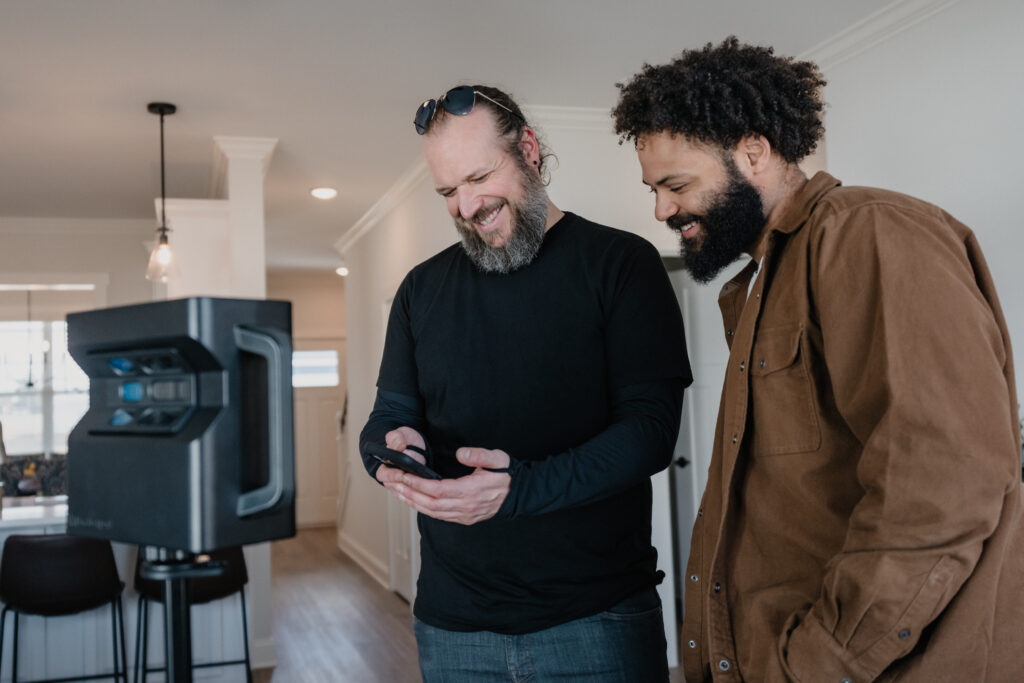
Are you wondering how virtual tours for real estate can transform your property buying or selling experience? In the era of digital advancements, virtual tours have emerged as essential tools, enabling prospective buyers to explore properties in detail from anywhere, at any time. They save time, provide comprehensive property views, and can significantly enhance marketing efforts for sellers. Within this article, we will dive into how virtual tours benefit the real estate market, offer a competitive edge, and what you can expect by leveraging them in your listings.
Key Takeaways
-
Virtual tours offer an immersive property viewing experience, saving time and resources for buyers and agents by allowing remote, in-depth exploration of properties with 360-degree views and interactive floor plans.
-
They serve as a powerful marketing tool, improving real estate websites’ SEO, attracting more online traffic, and boosting user engagement, leading to higher visibility and increased chances of selling properties faster.
-
Virtual tours provide a personalized and convenient way for prospective buyers to explore properties, reduce unnecessary in-person visits, and offer competitive advantage in the real estate market by highlighting key features and engaging potential buyers.
The Future of Home Showings: Virtual Tours
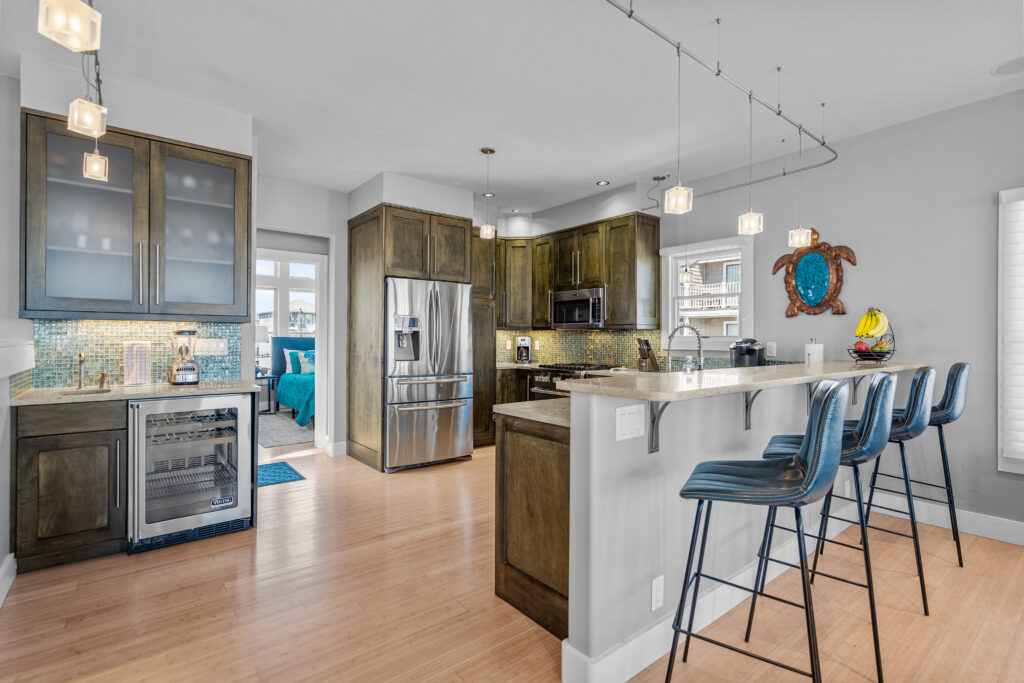
The real estate landscape is shifting dramatically, and at the heart of this change is the advent of virtual house tours. This innovative technology is redefining the way potential buyers view and interact with properties, providing an immersive, interactive experience like never before.
Imagine the convenience of:
-
exploring multiple properties from the comfort of your own home virtually to save time
-
exploring at your own pace
-
zooming in on key features and spaces that matter the most to you
The future of home showings is here, and it’s virtual.
Virtual tours aren’t just a cool novelty; they’re a game-changer for the real estate business. These tours permit potential buyers to:
-
Peruse all properties at once, thereby conserving significant time and resources for both buyers and agents
-
Experience the property as if they were physically there, with 360-degree views and interactive features
-
Get a better sense of the layout and flow of the property
-
Explore different rooms and areas at their own pace
-
Zoom in on specific details and features
-
Measure distances and dimensions
-
View floor plans and property information
Plus, the visual allure of virtual tours can result in increased lead generation and expedited deal closures, making them a captivating and practical tool in the commercial real estate sector.
A New Dimension in Property Listings
Virtual tours are adding a new dimension to property listings, taking them a notch above traditional static images or videos. With interactive and immersive experiences provided by virtual walkthroughs, properties listed on online search portals and real estate websites like Zillow 3D Home are gaining a competitive edge. To create virtual tours, professionals use specialized software and equipment to capture the essence of a property in a unique and engaging way.
Virtual tours in real estate are all about:
-
Capturing property panoramas to enhance the realism and detail of listings
-
Allowing potential buyers to thoroughly explore properties, bringing them closer to the actual experience of physical viewing
-
Presenting the property in optimal condition, highlighting key features to engage potential buyers
-
Exhibiting properties to a wider audience through multiple platforms
-
Generating more interest in the property and leading to faster sales.
Engaging Potential Buyers with Interactive Floor Plans
In the realm of virtual house tours, interactive floor plans are proving to be a game-changer. These floor plans not only display the property’s layout and flow but also create a more immersive experience. This allows potential buyers to visualize the space and comprehend the property’s features more effectively, thereby boosting user engagement with the visual information provided.
A few key components are involved in creating a successful interactive floor plan for virtual tours:
-
Detailed floor plans with measurements
-
Interactive elements
-
360-degree views
-
Navigability for visitors across various areas
This enhances the visualization and comprehension of the property layout. Prospective purchasers can explore various rooms, zoom in and out, rotate the floor plan, and click on specific areas for detailed information. As a result, they can envision themselves in the property and make well-informed decisions.
In essence, the key to successful virtual tours lies in strategic design, high-quality video and photography, and virtual staging techniques that effectively showcase the property’s narrative.
Enhancing Real Estate Marketing with Virtual Tours
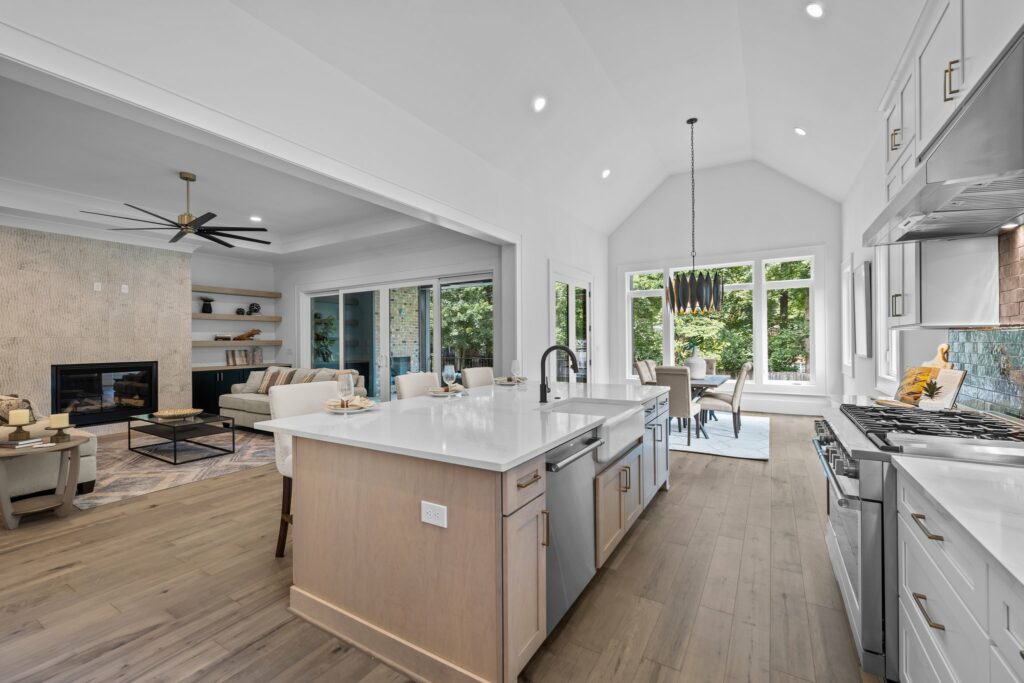
In the digital age, a robust online presence is imperative for businesses, with real estate being no exception. The online presence of real estate websites is being dramatically enhanced by virtual tours, which improve search engine optimization and result in higher click-through rates and enhanced search result visibility. This not only saves time for potential buyers and real estate agents by streamlining the property search process but also increases traffic to real estate websites.
But the benefits don’t stop there. Virtual tours offer a cost-effective marketing solution that provides potential customers with a lifelike property viewing experience. This dramatically improves their decision-making process. With virtual tours, real estate businesses can reach a larger audience and increase their prospects of closing deals, making them a powerful marketing tool in the real estate industry.
Boosting Online Presence and Attracting More Traffic
Virtual tours have proven to significantly enhance the Search Engine Optimization (SEO) of real estate websites. By incorporating multimedia content and strategic inclusion of keywords within the virtual tour content, these tours boost the website’s visibility to prospective clients conducting online searches.
Virtual tours offer several benefits for websites, including:
-
Elevating the user experience
-
Attracting a substantial amount of visitors
-
Increasing website traffic
-
Promoting extended engagement and dwell time
-
Offering interactive 360-degree property views
-
Reinforcing the site’s online visibility
Real estate websites that integrated virtual tours experienced the following benefits:
-
A significant increase in online traffic
-
Up to a 90 percent rise in exposure
-
Over 40% more clicks on their listings compared to those without virtual tours.
Sharing Made Easy: Virtual Tours on Social Platforms
In this era of social media dominance, sharing virtual tours on platforms such as:
-
Facebook
-
YouTube
-
WhatsApp
-
Facebook Messenger
can greatly increase the reach of property listings. The benefits are numerous, from serving as valuable marketing content to increasing exposure, driving more traffic, and appearing higher in search results.
To optimize engagement when sharing a virtual tour on social media, it is advisable to:
-
Create visual engagement opportunities
-
Share individual tour stops
-
Post condensed videos of the tour
-
Utilize social media platforms to expand the reach to a broader audience.
Virtual tours can be shared on prominent social media platforms such as Facebook and Instagram to effectively engage potential buyers and enhance brand recognition.
The Cost-Effective Nature of Virtual Tours
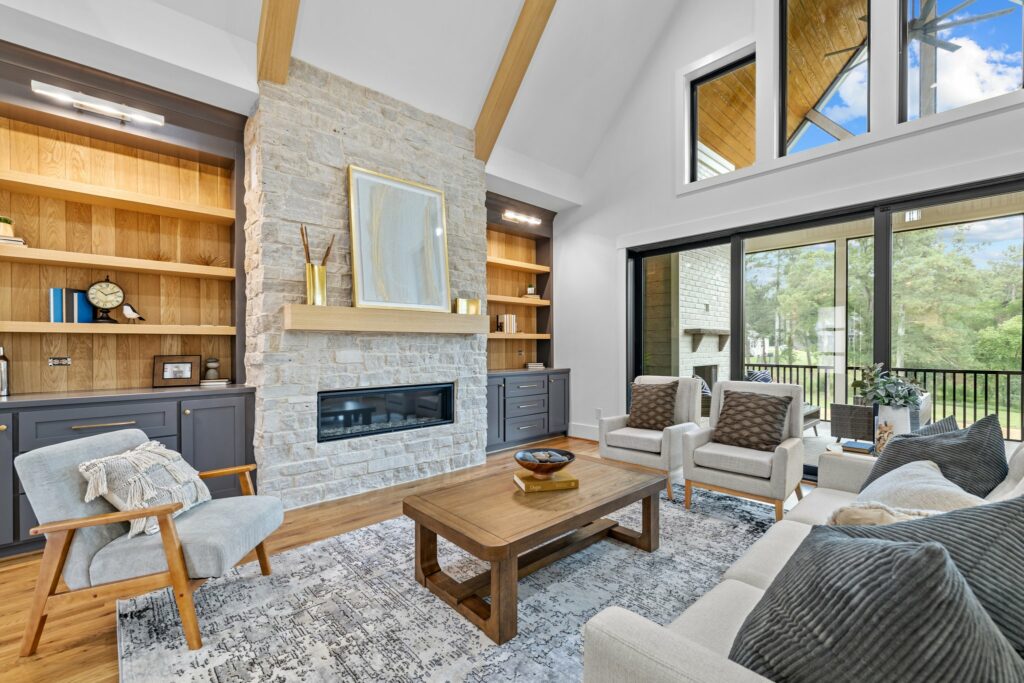
In terms of marketing, cost-effectiveness holds considerable weight, and virtual tours shine in this aspect. Virtual tours provide potential buyers with the flexibility to review properties at their own convenience, reducing the necessity for physical visits. This efficiency benefits both agents and potential buyers by eliminating unnecessary trips to properties that may not align with the buyers’ requirements.
Moreover, virtual tours contribute to cost reduction for real estate agents by eliminating the need for frequent driving to properties, thereby saving on gas expenses and reducing overall operational costs. In essence, one of the primary advantages of virtual tours is the significant time and cost savings on property visits, making them an exceptionally efficient marketing tool within the real estate industry.
Minimizing Unnecessary Visits and Saving Time
Unnecessary physical visits in real estate are minimized by virtual tours, which reduce the need for frequent property visits, allow potential buyers to peruse properties at their convenience, and increase the likelihood of serious prospects scheduling in-person visits after a virtual property exploration. Furthermore, virtual tours in real estate presentations provide efficiency benefits by removing the necessity for scheduling, traveling, and coordination. On average, the use of virtual tours can result in listings selling up to 31% faster, showcasing the time-saving aspect of this technology.
This functionality serves to sift through interest and generate more substantial inquiries, as engaged viewers are more inclined to seek additional information or schedule an onsite viewing.
Virtual Tours as a Competitive Edge in Real Estate
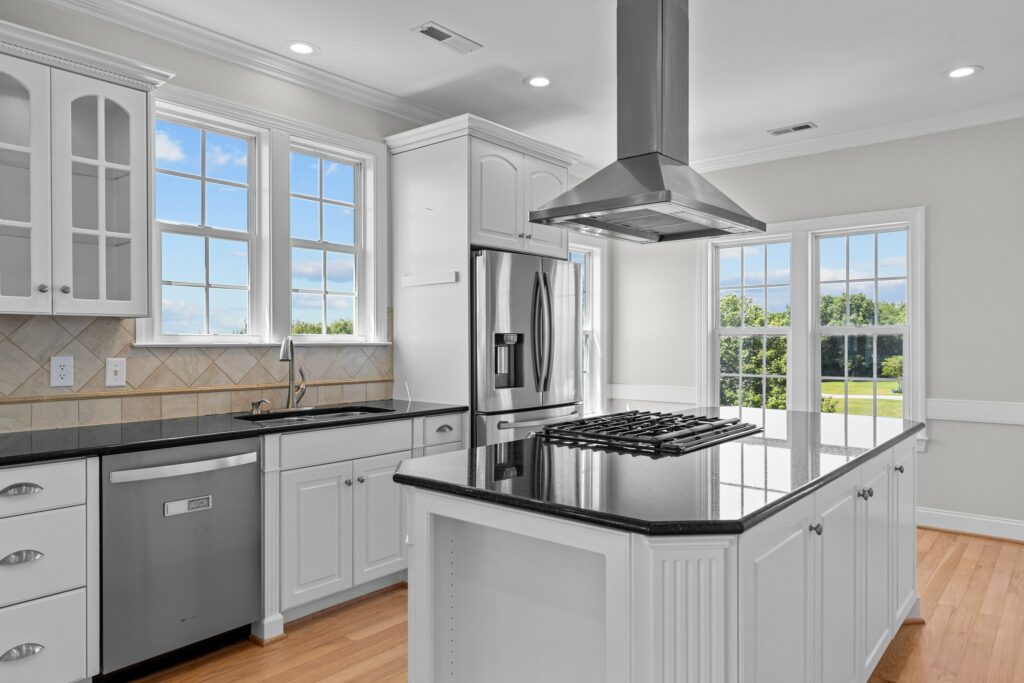
In the fiercely competitive real estate market, standing out is essential, and virtual tours achieve exactly that. By drawing more clicks to property listings, virtual tours offer a substantial advantage, elevating the final selling price of properties and generating heightened interest.
Success stories in the real estate industry abound where agents have effectively utilized virtual visuals to facilitate property sales. A boutique real estate agency has thrived by embracing virtual tours to adapt to the ever-changing market landscape. Furthermore, virtual tours have been shown to enhance the likelihood of a successful property transaction.
Tailored Virtual Experiences for Prospective Buyers
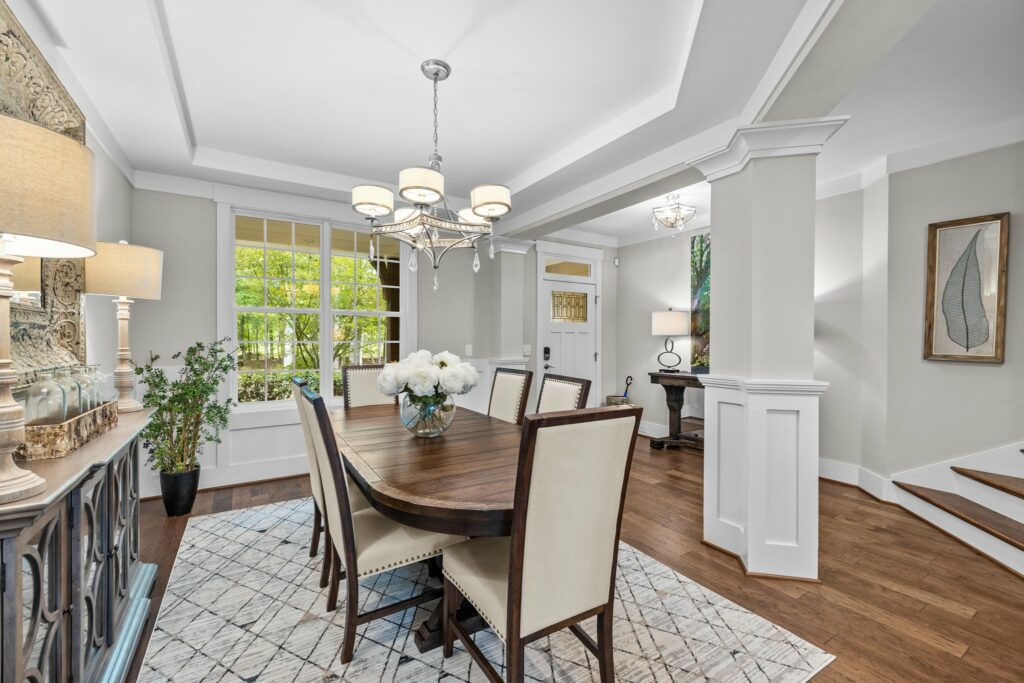
Virtual tours’ allure lies in their capacity to provide a personalized experience for potential buyers. Some ways virtual tours can cater to specific demographics include:
-
Emphasizing features like energy efficiency for environmentally conscious buyers
-
Adjusting designs according to the preferences of the buyer
-
Showcasing outdoor areas for clients who prioritize active lifestyles
By utilizing these strategies, virtual tours can effectively cater to the specific needs and preferences of different buyers.
Furthermore, virtual tours empower prospective buyers to engage in a customized exploration of the property, emphasizing specific areas and thoroughly examining every detail. They provide sellers with the opportunity to showcase the property in its optimal state and emphasize its significant attributes to appeal to potential buyers.
Customizing virtual tours to align with the interests of potential buyers can be achieved by incorporating custom elements like:
-
branding
-
interactive hotspots
-
floor plans
-
personalized messages.
Furthermore, the tour can be personalized to showcase specific features or areas of the property that resonate with the buyer, thereby providing a tailored experience that enhances their interest in the property.
Highlight Key Features with Precision
Customizing virtual tours to showcase specific features of a property involves:
-
Directing the focus towards those areas during the tour
-
Offering comprehensive descriptions
-
Adding interactive hotspots
-
Providing personalized navigation paths to steer viewers’ attention and enhance their immersive experience.
Moreover, virtual tours enhance a buyer’s capacity to visualize themselves in a property by providing them with the opportunity to extensively explore the property and mentally plan the arrangement of their furniture. This fosters an immediate sense of ownership and facilitates buyers in easily picturing themselves residing in the house.
Tools and software such as Teliportme, CloudPano, and 3DVista are employed for customizing virtual tours to highlight key features, allowing for customization that emphasizes property highlights.
The Seamless Integration of Virtual Tours
Virtual tours’ strength lies not only in their creation but also in their smooth integration into websites and multi-device accessibility. This provides convenience for potential buyers to access and explore properties from their own homes, using a variety of devices such as smartphones, tablets, and computers. They provide a comprehensive and interactive view of the property, ultimately saving time and effort in the property search process.
However, integrating virtual tours into real estate websites requires meticulous preparation to ensure optimal presentation on the website’s interface. It involves:
-
Utilization of high-definition virtual tours that are professionally created
-
Overcoming typical obstacles like substantial expenses, time-intensive creation process, and the requirement for technical proficiency
-
Sourcing cost-effective virtual tour providers
-
Acquiring user-friendly virtual tour tools
-
Partnering with proficient web developers
-
Utilizing supportive website builders
-
Optimizing the virtual tours for search engines
-
Implementing effective promotional strategies
Access Anytime, Anywhere: The Convenience Factor
Virtual tours offer convenience to potential buyers residing in different time zones, enabling them to examine properties at their convenience without the necessity of physical showings or scheduling with real estate agents. This is facilitated by technologies including 3D modeling, virtual reality (VR), and augmented reality (AR), which enable the production of high-resolution images that are integrated to provide a cohesive virtual experience.
Real estate companies ensure compatibility of virtual tours across different devices by utilizing virtual tour creators that are compatible with various devices and platforms. They also ensure that the virtual tours are accessible by any browser.
Obstacles in ensuring 24/7 accessibility for virtual tours often involve the need to create authentic experiences and establish rapport with clients. These challenges can be addressed by actively engaging with clients during the tour and incorporating interactive features.
Leveraging Virtual Tours for Better Client Engagement
Virtual tours serve as a potent tool for enhanced client engagement. They empower potential buyers to undertake a personalized exploration of the property and afford the opportunity to present the property in its prime state, thus facilitating follow-ups with interested buyers and the provision of extra information.
Successful client engagement through virtual tours has been demonstrated by:
-
The effective enhancement of property exposure
-
Offering immersive experiences through virtual staging
-
Boosting both interaction with the listings and the volume of real estate deal closures.
Follow-Up With Interest: Using Virtual Tours as a Tool
Virtual tours present properties to a larger audience and offer an engaging, interactive experience. By obtaining feedback from a diverse range of viewers and garnering increased views, virtual tours are an effective means of assessing client interest. Key indicators of potential clients in virtual tours include metrics such as the number of virtual tours created, unique visitor counts, and qualitative feedback from viewers.
Enhanced customer experiences, an expanded client base, and higher engagement and conversion rates serve as strong indicators of interest from potential clients. Engaged viewers are more inclined to seek additional information or schedule an onsite viewing, making virtual tours a powerful tool in identifying potential leads.
Summary
As we’ve seen, virtual tours are revolutionizing the real estate industry. By providing immersive and interactive experiences, enhancing online presence, offering cost-effectiveness, and serving as a competitive edge in the market, virtual tours are proving to be a game-changer. They offer tailored experiences, seamless integration, and better client engagement, making them an indispensable tool for the future of home showings.
Frequently Asked Questions
What is a virtual tour in real estate?
A virtual tour in real estate provides an in-depth walkthrough of the property, mimicking an in-person experience through either a video or a 3D photo tour. This helps potential buyers to explore the property remotely.
How do I make a virtual tour for real estate for free?
You can make a virtual tour for real estate for free using the Zillow 3D Home Tours app, which works with 360-degree cameras and smartphones to capture panoramas and generate an interactive home tour. Then, you can share the tour on multiple platforms to reach potential buyers.
Do virtual tours help sell houses?
Yes, virtual tours help sell houses by increasing reach, drawing in viewers, and being a powerful advertising medium in the real estate industry. Homes with a 3D tour are likely to sell faster than those without.
What are the main benefits of virtual tours in real estate?
Virtual tours in real estate provide immersive and interactive experiences for potential buyers, enhance online presence, offer cost-effectiveness, and serve as a competitive edge in the market. Additionally, they offer tailored experiences, seamless integration, and improved client engagement.
How do virtual tours enhance the online presence of real estate websites?
Virtual tours enhance the online presence of real estate websites by boosting search engine optimization, resulting in increased click-through rates and improved visibility in search results. This ultimately leads to a stronger online presence for the real estate website.

